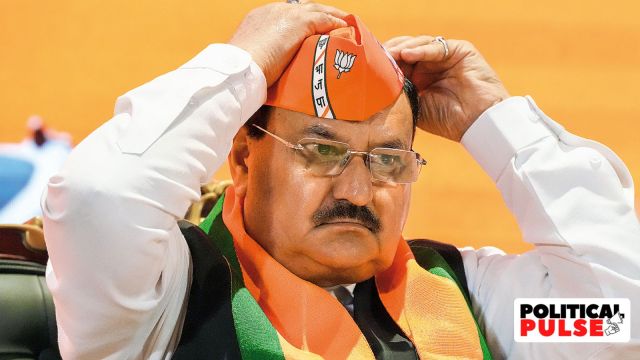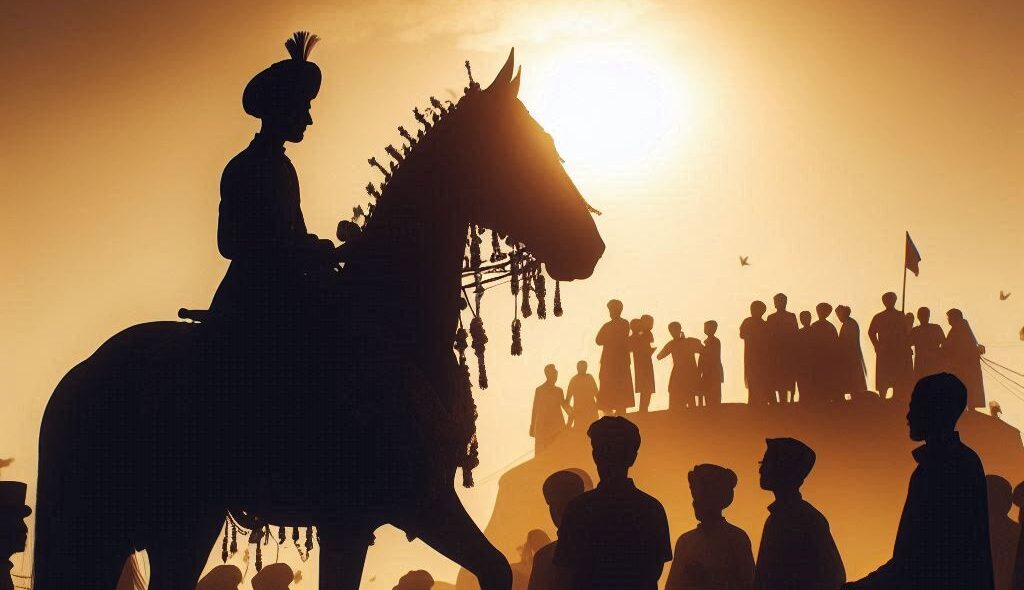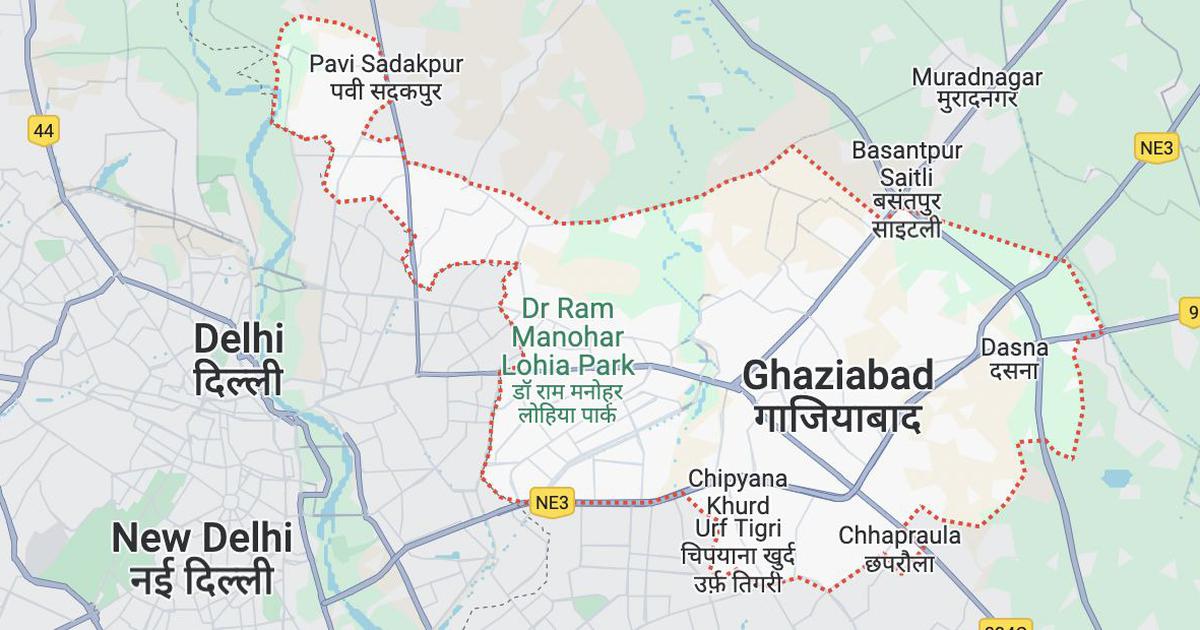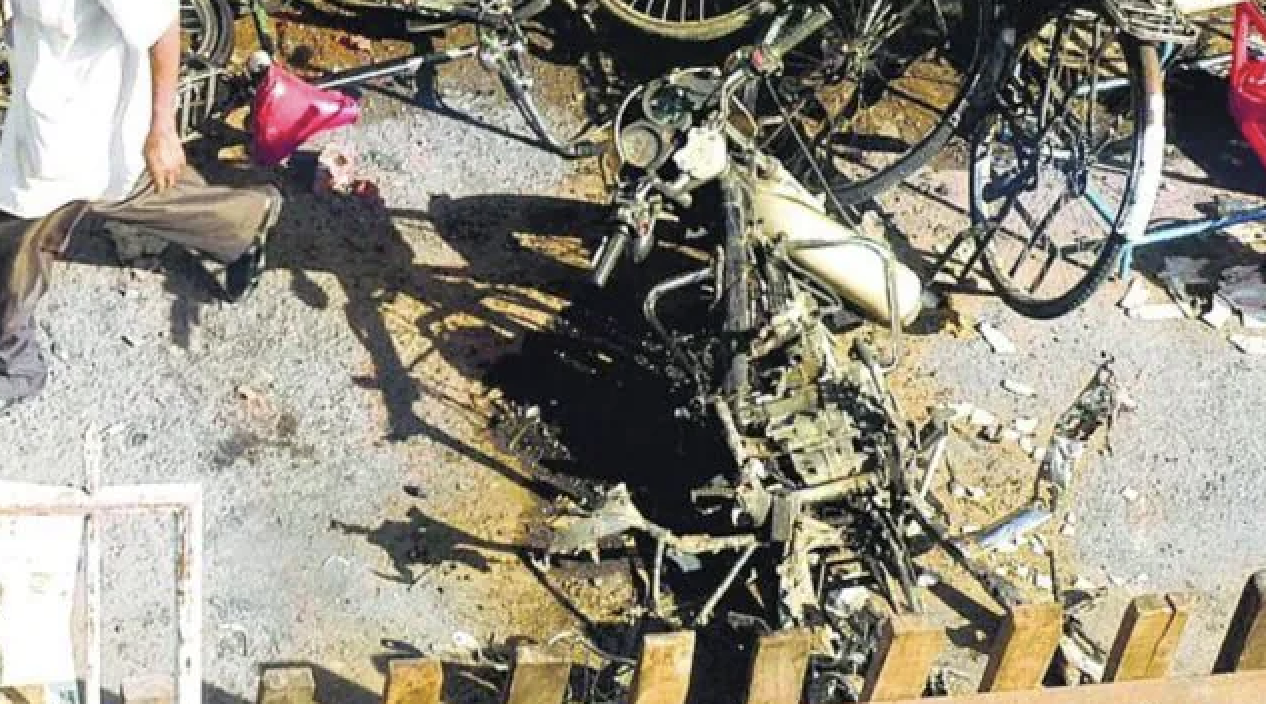
Lakhimpur Kheri, located in the Terai region of eastern Uttar Pradesh near the Nepal border, has turned into a fresh battleground for Hindutva politics ahead of the election to the State Assembly slated for early next year. The district with a predominant population of post-Partition migrant Sikhs, most of them farmers, is known as ‘Mini Punjab’. The farmers’ protest against the three Central farm laws, which started almost a year ago, was largely concentrated in western Uttar Pradesh, Haryana and Punjab. In recent months, however, the agitation spread to this part of the State. This irked some local Bharatiya Janata Party (BJP) leaders who saw the agitation as a threat to their election campaign.
On October 3, this resentment took an ugly turn in the district. In a single afternoon, many tragedies befell the farming community. While old differences between Sikhs and upper-caste Hindus developed into communal violence, the farmers movement involving Sikh and non-Sikh participants took a decisive turn.
Nachattar Singh (60), Lovepreet Singh (20), Daljeet Singh (35) and Gurvinder Singh (19), all farmers, and four others were killed in a text-book case of hate crime while close to 15 people were severely injured when three SUVs driven by Ashish Mishra, son of Union Minister of State for Home Ajay Mishra, and his associates, allegedly ran over them at Tikunia village.
Ajay Mishra, locally referred to as Teni Maharaj, hails from Banveerpur village in the district. Several villagers told Frontline that before joining politics, he used to be a gangster and a cross-border smuggler of timber and chemicals. He and his son are both respected and feared as dabangs (strongmen) who hold kangaroo courts to resolve issues pertaining to the village. Upper-caste Hindus and Muslims of the area defer to their authority, but Sikh farmers, who own large tracts of land, do not attend their darbar. In 2000, Ajay Mishra was accused in the murder of the Samajwadi Party (S.P.) leader Prabhat Gupta. A sessions court acquitted him of all charges in 2004. A criminal appeal filed in the matter is pending.
When Ajay Mishra entered politics, he tried hard to whitewash his image, the village residents say. In 2010, he was elected to the post of village Pradhan. In 2012, he was elected to the State Assembly from the Nighasan constituency. In 2014, he became a Member of Parliament and was re-elected in 2019. His induction into the Narendra Modi Cabinet during the reshuffle in July was seen as an attempt to appease the Brahmin constituency of the State ahead of the election.
Black flag march
Ajay Mishra was riled by the rise of the farmers protest in the Terai region. In a video that went viral, he was seen issuing a warning to the agitating farmers. According to some of the village residents Frontline spoke to, he said if he chose to assert his will, the ‘sardars’ would be finished. As a mark of protest, the farmers decided to stage a black flag march on October 3 near the venue of the annual wrestling contest organised in Lakhimpur Kheri by Ajay Mishra. They hoped to draw the attention of Deputy Chief Minister Keshav Prasad Maurya, who was to be the chief guest of the function.
Ashish Mishra and his associates arrived at the venue of the protest march in a convoy of three cars (a Scorpio, a Thar and a Fortuner), which were rammed into the crowd. “The Scorpio was in front, followed by the Thar,” Sukhjeet Singh, a local farm leader, who was present at the march, told Frontline. The Thar picked up speed and moved in a zigzag fashion, targeting as many people as it could, he said. After it rammed some 20 farmers, it lost control and overturned. Nachattar Singh was dragged under the wheels for 20 metres and his body was found split into two, Sukhjeet Singh said. “Everyone knows that the Fortuner is for the personal use of Monu [Ashish]. That vehicle also hit many people. We heard four or five rounds of ammunition being fired by Monu, and he managed to escape when the farmers started getting agitated,” he said. The angry farmers later set the Fortuner ablaze.
According to Sukhjeet Singh, Monu probably wanted to target Tajinder Singh Virk, a popular farm leader in the area. Virk had issued a video exhorting people to join the black flag march. After reaching the venue of the protest, he issued another video stating that they had reached the spot. Monu and his associates came right after that, in what is seen as a well-timed move to target as many people as possible, said Sukhjeet Singh. Virk was grievously injured and was rushed to a super specialty hospital where his condition was stated as critical. In a video issued from his hospital bed, Virk said he was out of danger and alleged that the government had tried to get rid of him.
Four persons in the convoy were killed in the clashes that ensued. Raman Kashyap, a television journalist who was covering the march, was killed. He allegedly succumbed to a bullet wound on his shoulder but some sections of the media stated that he succumbed to injuries suffered when he was beaten up by the mob of farmers. Pawan Kashyap, the deceased journalist’s brother, dismissed the contention that Raman was beaten up. “I removed his clothes in the mortuary and there were no marks of any beatings. I request the media to stop spreading such misinformation,” he said in a video. The Mumbai Press Club and the Editors Guild of India (EGI) demanded a probe by a Special Investigation Team into the death of the journalist.
The EGI said in a statement: “There are competing versions about Kashyap’s death, including a version that claims he died of bullet wounds. What is clear is that Kashyap was reporting on the events of the day when the horrific incident of the convoy running through protesting farmers happened, killing some of them. An independent inquiry is therefore needed to establish the cause of Kashyap’s death. In what is clearly a terror attack meant to spread fear among the farmers, the killing of Kashyap raises many questions. The Editors Guild demands that the death of Kashyap be separately probed by a court led special investigation team to ascertain the circumstances of his death and also attempt to recover and use the footage of his camera to build the sequence of events leading to his death.”
Tense situation
The situation became tense in the aftermath of the killing. The State administration ordered deployment of police personnel in and around the district. Two first information reports (FIRs) were lodged at the Tikunia police station. One of them was against Ashish Mishra and 13 others on charges of murder and rioting while the other was against unidentified persons on charges of murder, rioting and death by negligence. Ajay Mishra said his son was not present at the spot when the incident occurred, but eyewitnesses claim to have seen him there.
Internet services were suspended in the area and Section 144 of the Criminal Procedure Code was imposed. As farmers from nearby areas had arrived in thousands, the district was declared out of bounds. Congress leader Priyanka Gandhi, former Chief Minister and S.P. president Akhilesh Yadav, Aam Aadmi Party leader Sanjay Singh, Punjab Chief Minister Charanjit Singh Channi, Punjab Congress chief Navjot Singh Sidhu, Chhattisgarh Chief Minister Bhupesh Baghel and Bahujan Samaj Party’s national general secretary Satish Chandra Mishra were stopped from visiting the spot. Priyanka Gandhi’s arrest at 4 a.m. turned into a high drama. She was released after being kept in detention for more than a day. A video of her sweeping the floor of the room in Sitapur where she was detained, ruled the political optics of the day.
Communist Party of India (Marxist) general secretary Sitaram Yechury said in a tweet: “The BJP and Modi government have no business to not allow political parties to reach victims of the barbarism inflicted on farmers yesterday. Strongly condemn this draconian throttling of democracy.”
The Nationalist Congress Party chief Sharad Pawar said: “Whether it is the government at the Centre or in Uttar Pradesh, they are not sensitive at all. The kind of situation that was created in Jallianwala Bagh, we are witnessing a similar situation in Uttar Pradesh. Today or tomorrow, they will have to pay a heavy price for it.”
After the rape and murder of a Dalit girl in Hathras last year, the Lakhimpur Kheri incident has turned the spotlight back on the deterioration of the rule of law in in the State. In a rare show of solidarity, the opposition has united over the Lakhimpur Kheri incident. Many politicians, including Tamil Nadu Chief Minister M.K. Stalin, former Karnataka Chief Minister Siddaramaiah, Rajasthan Chief Minister Ashok Gehlot and the Telangana Rashtriya Samiti’s working president K.T. Rama Rao condemned the incident in one voice and demanded accountability from the ruling BJP. The BJP’s Pilibhit MP, Varun Gandhi, shared the video of the vehicle ramming the farmers, and tweeted: “this video of vehicles deliberately crushing farmers in Lakhimpur Kheri will shake anyone’s soul. Police should take cognizance of the video, identify the owners of these vehicles, their occupants, others involved in the incident and take action against them.” He and his mother Maneka Gandhi were summarily dropped from the national executive of the BJP, which was announced soon after.
Political observers predict that if the opposition manages to sustain its unity in the run up to the Assembly election, the BJP may have to put up a tough fight in the election, the outcome of which will determine its political future at the Centre.
While several political leaders were unable to reach Lakhimpur Kheri, leaders of Rashtriya Lok Dal, the Trinamool Congress and Chandrasekhar Azad of the Bhim Army managed to enter the district. Rakesh Tikait, the national spokesperson of the Bharatiya Kisan Union, was instrumental in calming tempers and engineering a peace deal between the administration and the farmers. He demanded that Ajay Mishra be sacked, his son arrested and Rs.1 crore compensation be given to the family members of the deceased farmers and a government job to one member of each of the murdered farmers’ families. The State government announced a compensation of Rs.45 lakh and a government job to one member of the family of each dead person and Rs.10 lakh each to the injured. It also said a retired High Court judge would be appointed to inquire into the incident.
Some sections of the media said Tikait’s deal betrayed the farmers’ cause. But Sukhjeet Singh told Frontline that it was the right thing to do. “What should he have done apart from negotiations? We have all seen what happened to the families of the victims of the Pulwama attack. Lashon ki rajneeti galat baat hai [politics on dead bodies is wrong]. The families at this point need all the support they can get. He did the right thing.”
The farmers continued with their agitation and organised a massive ‘antim ardas’, or prayer meet, for the slain farmers.
On October 9, Ashish Mishra, was arrested by the Special Investigation Team (SIT) after 12 hours of questioning and sent to police custody for three days. Fourteen other people have been arrested in the case. On October 24, Ashish Mishra was admitted to the district hospital after he tested positive for dengue. Deputy Inspector General of Police Upendra Kumar Agarwal, who was heading the SIT, was transferred to Devipatan range, 200 km from Lakhimpur Kheri, triggering speculation that the probe was being stymied. But the State administration maintained that the transfer was part of a routine reshuffle of Indian Police Service officers.
The Supreme Court took suo motu cognisance of the incident. On October 26, a bench headed by the Chief Justice of India N.V. Ramana and comprising Justices Surya Kant and Hima Kohli directed the State government to provide protection to the witnesses of the violence and expressed surprise that only 23 eyewitnesses had been recorded out of a gathering of hundreds and thousands of protesters, by the State’s own admission. The bench told Senior Advocate Harish Salve, who was representing the State of Uttar Pradesh, to identify more witnesses.
Caste atrocity
Meanwhile, the farmers protests hit the headlines for all the wrong reasons when a Dalit Sikh man’s mutilated and bloodied body clothed only in an undergarment was found hanging from a police barricade at the Singhu border protest site on October 15. The hand of the 35-year-old farm labourer, Lakhbir Singh, was chopped off and his body reportedly had a dozen wounds caused by sharp objects. It was supposed that he must have bled to death. Sarabjit Singh, a member of the Nihangs, a militant sect within the Sikhs, later admitted to committing the horrendous crime and was arrested for the brutal murder along with three others, who said they had no regrets and had punished Lakhbir Singh for desecrating the holy scripture. According to them, he had committed sacrilege by touching the holy book. Lakhbir Singh’s estranged wife, Jaspreet Kaur, and his sister Raj Kaur disputed the claim and said that Lakhbir Singh would not desecrate the holy book as he was a devout person.
The caste atrocity was followed by a social boycott of the entire family. Cheema Kalan village in Tarn Taran district of Punjab refused space for the cremation of Lakhbir Singh’s body and boycotted the cremation altogether.
Members of the Guru Granth Sahib Satkar Committee prohibited the family from cremating Lakhbir Singh according to the Sikh ritual, ‘rehat maryada’. His sister told the media that the family was living in fear. Around 15 anti-caste organisations submitted a memorandum to the National Commission for Scheduled Castes demanding action against Lakhbir Singh’s murderers.
While several netizens demanded justice for the lynching of Lakhbir Singh, the Samyukta Kisan Morcha (SKM) distanced itself from the Nihang Sikhs involved in the gruesome murder and avoided any comment on the caste fault lines plaguing the Sikh community. Instead of condemning the lynching in an unequivocal manner, the SKM condemned the alleged act of Lakhbir Singh that led to his murder and said that “sacrilege in any religion and faith is not acceptable, and needs to be condemned”.
Terming the incident a “dangerous distraction planted in the movement”, the SKM appealed to the farmers not to fall prey to such “distractions” and pointed to a conspiracy. In a statement, the SKM said: “Behind this is a conspiracy to give a bad name to the farmers’ movement and to entrap it in violence. SKM demands that Union Ministers Narendra Singh Tomar and Kailash Chaudhary who were documented in pictures to have met the Nihang Sikh leader whose group is involved in the brutal murder should immediately resign. To investigate into the conspiracy and the deep plot to entrap and denigrate farmers, the SKM demands that an investigation by a Supreme Court judge should be instituted. The SKM has already clarified that the morcha has nothing to do with the Nihang Sikhs involved in this incident. The SKM would now like to clarify strongly that there is no space in the Singhu Border morcha or any other morcha for the accused groups and communes in this murder. This is a farmers’ movement and not a religious movement.”
More than 600 people have lost their lives since the farmers’ agitation began almost a year ago. The Lakhimpur Kheri incident is significant because the extent of the farmers protest in eastern Uttar Pradesh could prove catastrophic for the BJP in the upcoming election.
Chief Minister Adityanath knows this, which might explain his alacrity in agreeing to a peace deal with the farmers on the issue and the quick arrests of Ashish Mishra and others in the case. It is no secret that there is a power struggle brewing between Prime Minister Narendra Modi at the Centre and Adityanath ever since the latter became Chief Minister in 2017. There is speculation in some sections that the Lakhimpur Kheri incident might have been orchestrated by the Centre to undermine Adityanath, but by agreeing to the demands of the farmers, the Chief Minister outwitted it.
Engineering communal or caste violence as an election strategy is the hallmark of the BJP, and voters have come to expect it one way or another. Lakhimpur Kheri had all the ingredients for stirring the communal cauldron, this time by pitting Hindus against Sikhs. While the ploy may not have succeeded, it surely marks the beginning of a charged political campaign in the election-bound State.
This story first appeared on frontline.thehindu.com






